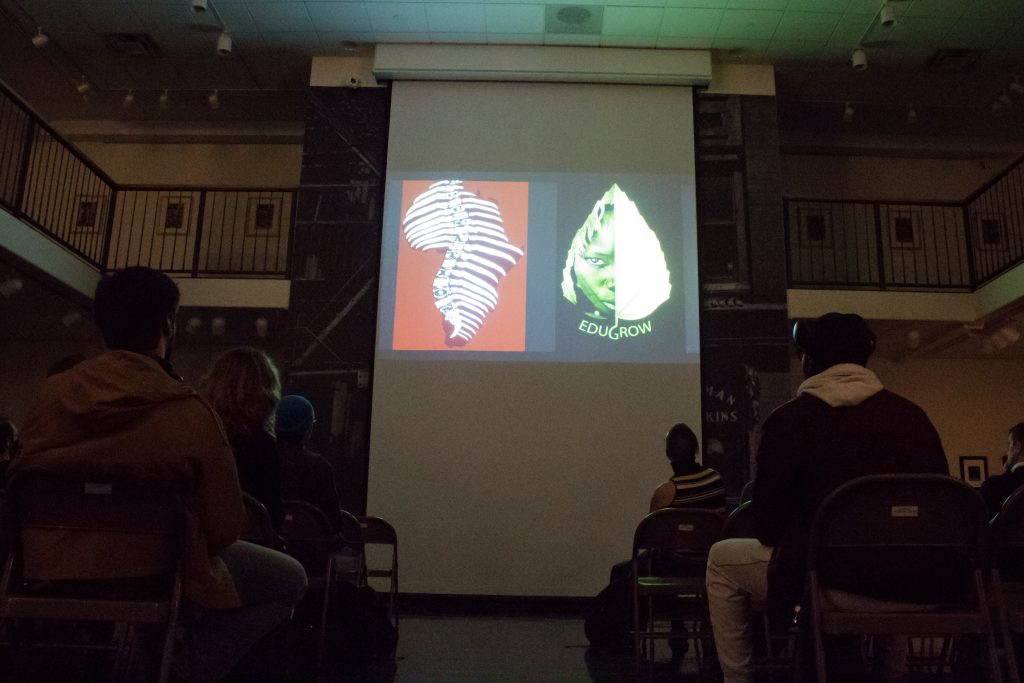
Educator and designer Saki Mafundikwa came to Binghamton University on Wednesday to discuss the political situation in his home country of Zimbabwe and how it intersects with his graphic design work.
The talk, hosted by the BU Art Museum and titled “What forty years of living under a ruthless dictatorship has taught me,” touched on Zimbabwe’s history and current political situation, as well as Mafundikwa’s experiences growing up in Zimbabwe and coming to the United States to study graphic design. Later, Mafundikwa returned to his country to open a school of design and visual media, and he currently teaches in Seattle.
Mafundikwa was introduced by Alessandro Segalini, an assistant professor of art and design. Segalini said Mafundikwa was one of the artists featured in the “Path of Tolerance” exhibition, presented on the Spine on Sept. 29 by designer Mirko Ilić. When he found out that Mafundikwa was going to be giving a talk at University at Buffalo earlier this week, the department reached out to him to invite him to the University.
“[I hope students gain] a perspective that is not, say, prefabricated or standardized, because we are used to recipes in terms of designing things, cookie-cutter kind of style,” Segalini said. “He is one of the designers who appreciates craft.”
Mafundikwa grew up in Zimbabwe but fled his country in the late 1970s because of political unrest. He said he experienced corruption, violence and economic malfunction while in Zimbabwe. He also discussed the decades-long tenure of Robert Mugabe, former prime minister of Zimbabwe, which he said was fraught with violence and human rights abuses.
“It might sound like a Saturday Night Live skit, but it is actually reality, and I lived through that,” Mafundikwa said. “It is a very artificial environment where there is no real money, but you can only do this for so long before corruption sets in.”
Nevertheless, Mafundikwa said there are positive and hopeful aspects for Zimbabwe, including the great art and design that can be found there. Specifically, he mentioned the majesty of “Great Zimbabwe,” a historical city possessing a great monument, or structure, built in the 12th century by the Shona, an ethnic group within the country.
He also displayed some of his students’ artwork, including several typography projects and theses in graphic design. Mafundikwa said he is proud to have contributed to the fight for education in Zimbabwe with the creation of his design school.
Jo Myers, a senior majoring in art and design, said she hoped she could draw from Mafundikwa’s perspective.
“I wanted to see what his work is about, and I care about the human rights angle along with the art angle,” Myers said. “I really wanted to see what was going on from his perspective, and not just hearing about it after the fact.”


